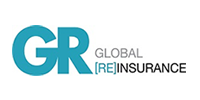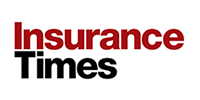A panel discussion on “Turning Economic Visions into Reality”, heralded the huge opportunities, and challenges, too, for the re/insurance industry, as ambitious economic projects, such as Saudi Arabia’s Vision 2030, continue to take shape.
The Gulf Cooperation Council (GCC) region is entering a new era of economic diversification, infrastructure development, and demographic changes.

This is fuelling strong prospects for insurance and reinsurance growth, beyond traditional and typically compulsory lines of medical and motor coverage.
Speaking at the Dubai World Insurance Congress (DWIC), Owais Ansari (left of picture), regional CEO of Munich Re for the Middle East and North Africa (MENA), outlined the macroeconomic context and how this is driving a growing demand for diverse insurance products, extending beyond traditional lines.
“In the Mena region, the focus has been on economic diversification, improvement of the quality of life, infrastructure developments, and these have fuelled the insurance industry overall,” he said.
“From an insurance perspective, the growth has historically come from two lines of business – medical and motor… But there is a lot of optimism and possibilities of new avenues where a new product line will see the growth coming.”
Ansari also pointed to the region’s young and growing population as another major driver of re/insurance growth, with the median age in MENA at 26.8 compared to 44 across Europe. This, he said, creates unique opportunities for developing products tailored to young consumers.
In addition, mega and giga projects underway in Saudi Arabia and the UAE will require specialised insurance products, including engineering, liability, and emerging technology coverage. Rapid technology adoption is also expected to catalyse new insurance solutions aligned with the ever-evolving needs of digital-savvy consumers and businesses.
Against this backdrop, insurers and reinsurers must focus on anticipating evolving client demands, including bespoke covers for emerging industries and the continued growth of non-traditional sectors such as health tech, tourism, entertainment and green energy.
Boosting talent
A skilled re/insurance workforce is critical to support the insurance sector’s continued expansion. Companies are therefore actively balancing the need to nurture local talent with a desire to import specialist expertise from abroad.
Talal Bahafi (pictured, centre), managing director and CEO of Willis Towers Watson in Saudi Arabia explained: “In order to develop the local talent in the market, we need three things in parallel. The first is shared knowledge and mentors from leadership like us… The second part is exposure to new projects, new products in the market… And the third component is specialised international expertise.
“Giving all these components together, I’m sure our future leaders will be more able to take insurance and business to the next level to achieve the Vision 2030 objective and beyond,” he said.
Bahafi highlighted the success of initiatives such as actuarial education programmes, which have helped to build a pipeline of home-grown technical specialists.
Further investment is needed, he cautioned, including via international knowledge transfer schemes, graduate induction programmes, and leveraging technology to modernise traditional insurance roles, making them more attractive to the next generation.
Ansari stressed the importance of making the insurance sector more appealing to young talent by showcasing how insurance careers now integrate finance, technology, and AI skillsets. Cross-border training initiatives, boot camps, and partnerships with global centres of excellence will be vital to ensuring that regional firms can build leadership from within, he suggested.
Regulatory challenges
As the market grows, so too does the regulatory environment. Reforms in Saudi Arabia, the UAE and wider GCC countries are reshaping compliance standards, governance requirements, and capital management strategies for insurers, panellists agreed.
Ansari highlighted the crucial role reinsurers are playing in helping insurers navigate this evolving landscape.
“One of the key aspects from a reinsurance perspective is to provide the capital optimisation and solvency optimisation solutions to our clients so that they are able to write more business and write it more profitably,” he said.
Beyond traditional risk capacity, he argued that reinsurers are increasingly providing technological solutions, actuarial support, and structured reinsurance products designed to help local insurers manage new regulatory solvency frameworks and compliance reporting expectations. This expertise is crucial as insurers pivot towards more sophisticated financial and operational models.
Navigating this landscape successfully will require firms to remain agile, investing not only in compliance capabilities but also in technology platforms that can help meet reporting requirements, improve transparency, and drive more accurate pricing models.
Meanwhile, opportunities for mergers, acquisitions, and cross-border partnerships will also emerge as regulatory expectations push towards consolidation and scale.
A region poised for transformation
With youthful demographics, a fast-evolving regulatory landscape, and rapid economic diversification, the GCC and MENA regions offer significant opportunities for insurance and reinsurance players – provided they invest in local talent and adapt to change.
Essentially, the panel agreed, for firms willing to invest in the future – in new product lines, technology transformation, and human capital – the next decade in the Middle East and North Africa promises sustainable growth and innovation.
Bahafi added a note of pragmatic optimism about how insurers must evolve. He concluded: “The shift [towards leveraging AI] will push insurance companies to focus more on profitability and price accuracy, and this will sustain the growth and expansion for insurance companies in the market.”










No comments yet